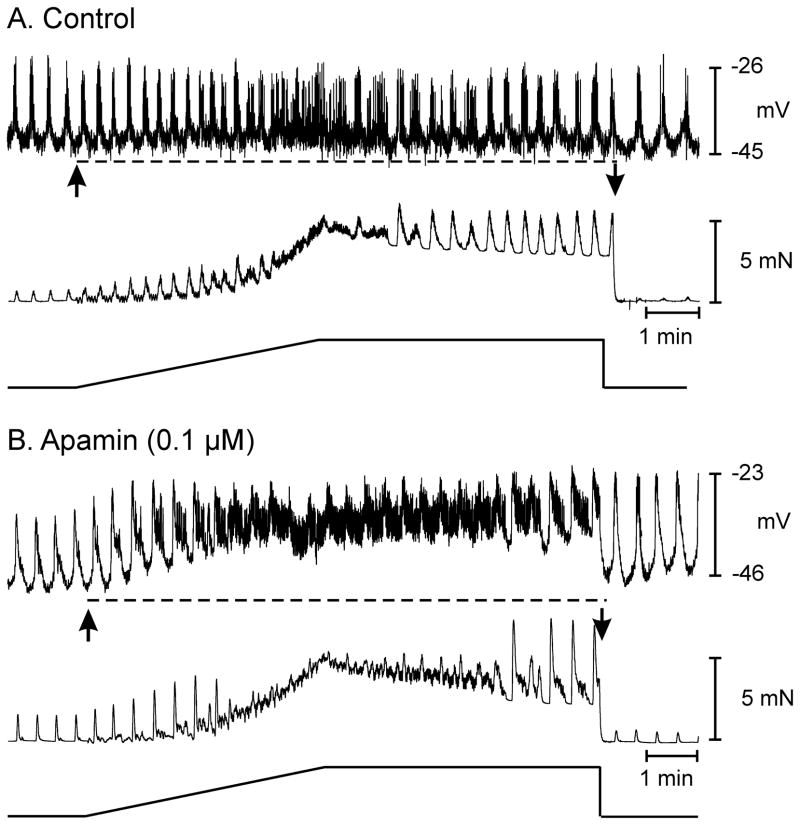Figure 4.
An apamin sensitive ion conductance contributes to stretch-dependent responses in the proximal colon. (A) Shows electrical activity and associated isometric force in response to a 5 mN tension ramp under control conditions, i.e. atropine (1 μM) and L-NNA (100 μM) to remove any contribution of cholinergic or nitrergic neural inputs. Stretch-dependent membrane hyperpolarization (dashed line in A) was absent in the presence of L-NNA and atropine. (B) Shows the response of the same muscle preparation after the addition of apamin (0.1 μM). Active change in muscle length caused depolarization in membrane potential and caused a fusion of AP complexes into a continuous discharge of APs (dashed line in B) that was associated with an increase in the frequency of phasic mechanical contractions but a decrease in maximal force production. Maintaining the stretch at 5 mN force caused a gradual return in phasic electrical and mechanical activity that immediately returned to pre-stretch control activity following release of the tension ramp.

